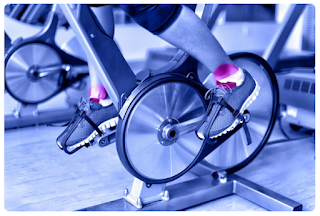Sports Injuries: Types, Treatments, Prevention, and More - Manningham Foot Clinic
Sports Injuries: Types, Treatments, Prevention, and More - Manningham Foot Clinic
They have highly skilled training to provide you with an accurate diagnosis and strategic treatment plan to help you fix your sports injury. At Manningham Foot Clinic.
Manningham Foot Clinic sports injuries are commonly caused by overuse, direct impact, or the application of force that is greater than the body part can structurally withstand. Common injuries include bruises, sprains, strains, joint injuries and nose bleeds.
What Causes Sports Injuries?
Anyone participating in sports or athletic activity is at risk of suffering a foot or ankle injury. Because the feet and ankles carry and bear your entire weight, they are the most commonly injured parts of the body.
The most common sports-related injuries are:
- Strains and sprains
- Achilles tendinitis
- Foot, toe and ankle fractures or dislocation
- Heel and arch pain
We'll help you get back to your routine
These injuries can be caused by overuse, inappropriate footwear, intense workouts, lack of warm-up and playing on hard surfaces.
Sports Injury Assessment and Care
At Manningham Foot Clinic, we are able to determine the type of injury you have and recommend the appropriate treatment, such as:
- A footwear assessment
- Orthotics to support the injured area
- Ankle braces for added support
- Foot and ankle mobilisation techniques
- CAM walkers
- Prolotherapy
- We facilitate your ankle’s healing process
Orthotics
Sports Injury Treatment Melbourne, Continuous use of an injured foot can result in muscle imbalances, which can lead to permanent damage and restricted muscle movement. If you’re pushing through the pain, get in touch! Our professionals will make sure your injury heals correctly.
Overview
Manningham Foot Clinic Sports injuries occur during exercise or while participating in a sport. Children are particularly at risk for these types of injuries, but adults can get them, too.
You’re at risk for sports injuries if you:
haven’t been regularly active
don’t warm up properly before exercise
play contact sports
Read on to learn more about sports injuries, your treatment options, and tips for preventing them in the first place.sports injury melbourne,.
Types of sports injuries
Different sports injuries produce different symptoms and complications. The most common types of sports injuries include:
Sprains. Overstretching or tearing the ligaments results in a sprain. Ligaments are pieces of tissue that connect two bones to one another in a joint.
Strains. Overstretching or tearing muscles or tendons results in a sprain. Tendons are thick, fibrous cords of tissue that connect bone to muscle. Strains are commonly mistaken for sprains. Here’s how tell them apart.
Knee injuries. Any injury that interferes with how the knee joint moves could be a sports injury. It could range from an overstretch to a tear in the muscles or tissues in the knee.
Swollen muscles. Swelling is a natural reaction to an injury. Swollen muscles may also be painful and weak.
Achilles tendon rupture. The Achilles tendon is a thin, powerful tendon at the back of your ankle. During sports, this tendon can break or rupture. When it does, you may experience sudden, severe pain and difficulty walking.
Fractures. Bone fractures are also known as broken bones.
Dislocations. Sports injuries may dislocate a bone in your body. When that happens, a bone is forced out of its socket. This can be painful and lead to swelling and weakness.
Rotator cuff injury. Four pieces of muscle work together to form the rotator cuff. The rotator cuff keeps your shoulder moving in all directions. A tear in any of these muscles can weaken the rotator cuff.
Sports Injuries Treatment
The RICE method is a common treatment regimen for sports injuries. It stands for:
- rest
- ice
- compression
- elevation
This treatment method is helpful for mild sports injuries. For best results, follow the RICE method within the first 24 to 36 hours after the injury. It can help reduce swelling and prevent additional pain and bruising in the early days after a sports injury. Here’s how to follow RICE, plus a recovery timeline.
Both over-the-counter and prescription medications are available to treat sports injuries. Most of them provide relief from pain and swelling.
If your sports injury looks or feels severe, make an appointment to see your doctor. Seek emergency care if the injured joint shows signs of:
- severe swelling and pain
- visible lumps, bumps, or other deformities
- popping or crunching sounds when you use the joint
- weakness or inability to put weight on the joint
- instability
Also seek emergency attention if you experience any of the following after an injury:
- difficulty breathing
- dizziness
- fever
Serious Sports Injuries can require surgery and physical therapy. If the injury doesn’t heal within two weeks, contact your doctor for an appointment.
Sports injuries prevention
The best way to prevent a sports injury is to warm up properly and stretch. Cold muscles are prone to overstretching and tears. Warm muscles are more flexible. They can absorb quick movements, bends, and jerks, making injury less likely.
Experience Foot Mobilisation Therapy in Melbourne at Manningham Foot Clinic. Visit us for revitalized feet and lasting relief
Step into Optimal Foot Health: Discover Unparalleled Care with Podiatrists Bulleen - Manningham Foot Clinic
"Experience unparalleled foot care and step into optimal foot health with expert podiatrists in Bulleen. Discover transformative care today.
"Experience exceptional podiatry care in Bulleen with expert podiatrists. Elevate your foot wellness and discover personalized solutions for optimal foot health."
Podiatrist Bulleen: Elevate Your Foot Wellness with Exceptional Podiatry Care







Comments
Post a Comment